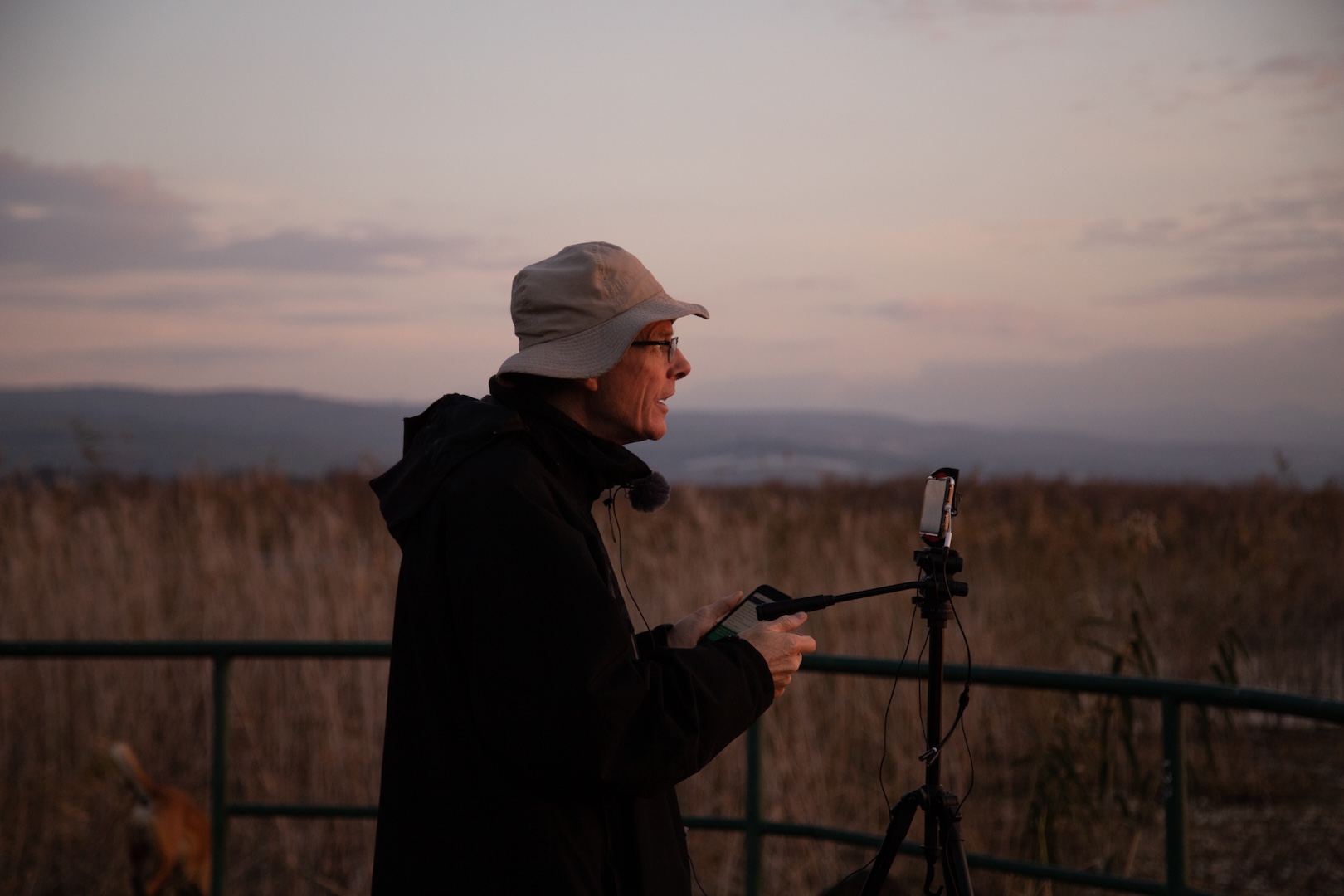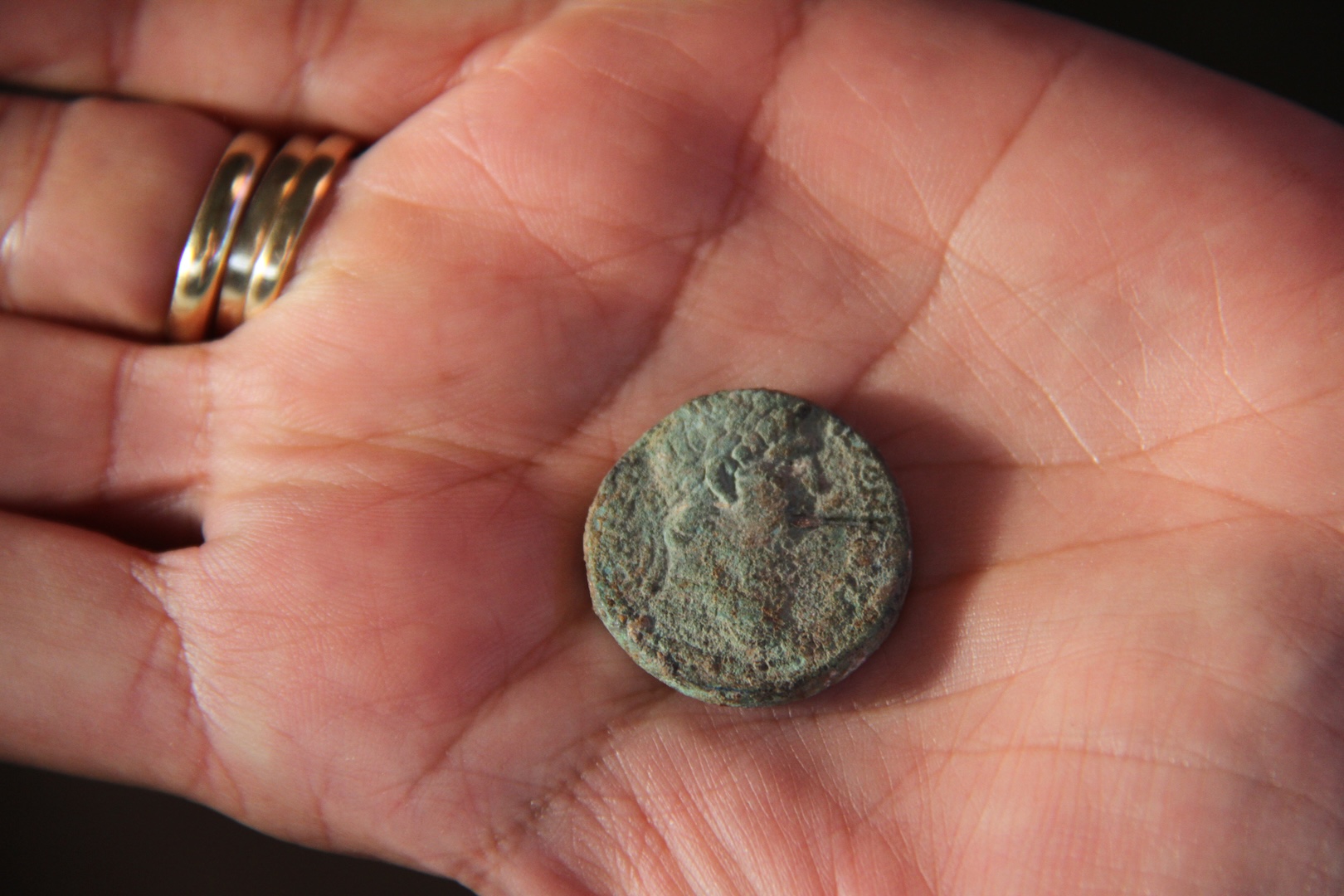Why does everyone feel at home in Duc In Altum?
Secular people and persons of faith, Jews and Christians, all variants of Christianity and even Druze and Muslims seem to relish their visit in Duc In Altum! People are touched by the integration of stone colors and contours with the surrounding nature of Mount Arbel and the Sea of Galilee. Water and stone, glass and wood, light and space interplay with the circular, the octagonal, and the dome upon the columns.
The opening vistas from the intimate warmth of the interior spaces engage the contemplating visitor’s soul. The interior confines don’t hold us in but actually launch us beyond walls and limits, lifting our thoughts and stirring our emotions.
Men are challenged by the serious boat ready to sail, now a table of sacrifice and self-giving to benefit others. It’s time to get our act together and set out into the deep.
Women immediately delight, as we all should and do, in the recognition and celebration of feminine dignity through the architecture, mosaics, fresco decorations and inscriptions honoring all women and some individuals by name. The Women’s Atrium, like a mother in a large family, is the hub of all the activity. It’s a generous presence pouring into all the other spaces. It is impossible to go from one chapel to another without traversing this space. Atop, sits the plenitude of the dome with its acoustic resonance benefiting speaker, singer and musician alike, not to mention the visitors.
The culture lover, like the nature lover, finds many a stimulus through the interaction of the historical and the contemporary. The spirit of Magdala is a crossroads for everyone. However, as mentioned in our May article , given the dating and specific nature of the archeological finds, these sensational discoveries resonate powerfully for Jews and Christians. Let’s highlight especially two of the more dramatic sensations visitors experience: first the floor mosaic in the Women’s Atrium and then the Encounter Chapel.
Some visitors are shocked upon stepping inside Duc In Altum and feeling the rough mosaic surface under their feet. They look once. They look again. They observe companions’ reactions and are ready to ask a question or at least, more discreetly expect an explanation. How could this new edifice where Christians frequently gather to pray be decorated by what looks like a swastika! And precisely in Israel in an edifice completed just ten years ago, precisely in Israel. And which was only completed ten years ago (dedication was in May 2014)! Their astonishment grows when a companion or their guide or a Duc-In-Altum volunteer points out that this mosaic is a direct copy of the same mosaic pattern found in our first century synagogue ruins!

It’s really possible, given the overload of data and information and explanations entailed in a good day’s pilgrimage, compounded by a week of the same, that many a visitor hasn’t fully grasped all the visible details of any site, no matter how well a guide explains. This is all the more understandable when one considers that a pilgrimage is not merely a cultural download but oftentimes an intense spiritual journey, even an existential personal drama.
Now, they will ask why did we copy the first century synagogue mosaic for this building. The pillars honor women who were profoundly dedicated to Jesus’ community. These pillars bear the women‘s names and are all connected by the mosaic from our synagogue. This symbolizes that they were deeply bonded with the outstanding women of the Hebrew Scriptures. Such a gesture stimulates awareness of our profound historical relationship with others who are different and fosters mutual appreciation. Consequently, healthy bonds can develop further.
As humanity and society continue to fracture profoundly, we need to rediscover what we share, treasures ever ancient and ever new. Given the sacredness of our shared heritage, people of faith should confidently lend leadership to bridge-building in a world that tends to divide, often building walls of exclusion.
Now we descend to the Encounter Chapel. Jewish visitors are often surprised and some even shocked by this chapel’s synagogue-like structure, modeled on our synagogue. The six pillars, and the seating are readily grasped. When visitors hear that we had fresco samples from our synagogue analyzed in a laboratory and identified the colors which were then reproduced to match the original colors, they are often moved.

Sometimes Jewish folk ask ״how come we would design a chapel like a synagogue״? We discuss how Jesus visited Galilean synagogues on Shabbat, Saturday, teaching about God’s Kingdom and healing the sick, the result being that his disciples developed their faith in Jesus. Without this historical reality, we cannot even speak of the Christian Church. This reflection only deepens mutual understanding, a good therapy for possible prejudice still potentially affecting our relationships.
Everyone loves the Encounter Chapel, but especially people from the Churches stemming from the Reformation heritage. They often request opportunities to celebrate Communion there. Similarly, the Churches of the East appreciate Duc In Altum, probably, because of to the artistic choice of mosaics, icons and the hexagonal architecture, among other elements.
An interesting fact is that without our planning, the major artists that have contributed to Magdala are all from Chile. One is Catholic, one Orthodox Christian and one a son of Evangelical parents. It seems like Providence, without our prior planning, sought artists who represent major portions of Christianity to contribute their talents and offer artistic witness together to our shared faith.
Duc In Altum is also a Crossroads where we can encounter each other substantially and deeply. We pray that we may all be enriched by encounter here and may grow in mutual appreciation, a step closer everywhere around the world.
Magdala’s people, Alternative Experiences even during difficult times
Magdala Employee Fun Outing

On Wednesday, June the 5th, the majority of our employees were able to participate in a fun day hosted in the vicinity of the Ein Harrod National Park. Employees and Volunteers formed four teams to fight a passionate paintball battle. The first teams entered the paintball battlefields. Those waiting for their turn, meanwhile enjoyed a fascinating team-building competition: a 3 - 4 meter high letter A like wooden structure, held aloft by six ropes attached to the top of the A was managed by a team of 7 in a walk -race against another team. Learning quickly to work together as a team was essential toward winning. This 15-20 minute workout exhausted everyone. Imagine Jews, Arabs, Muslims Christians and Druze teaming up together and all competing.

A state-of-the-art barbeque in the park where Gideon and the Philistines duked it out over 3000 years earlier, completed a very fulfilling day. We all returned home feeling our specially designed T-Shirt expressed our reality: Separated we are drops. Together we are a whole lake.
Discover more articles from this category






